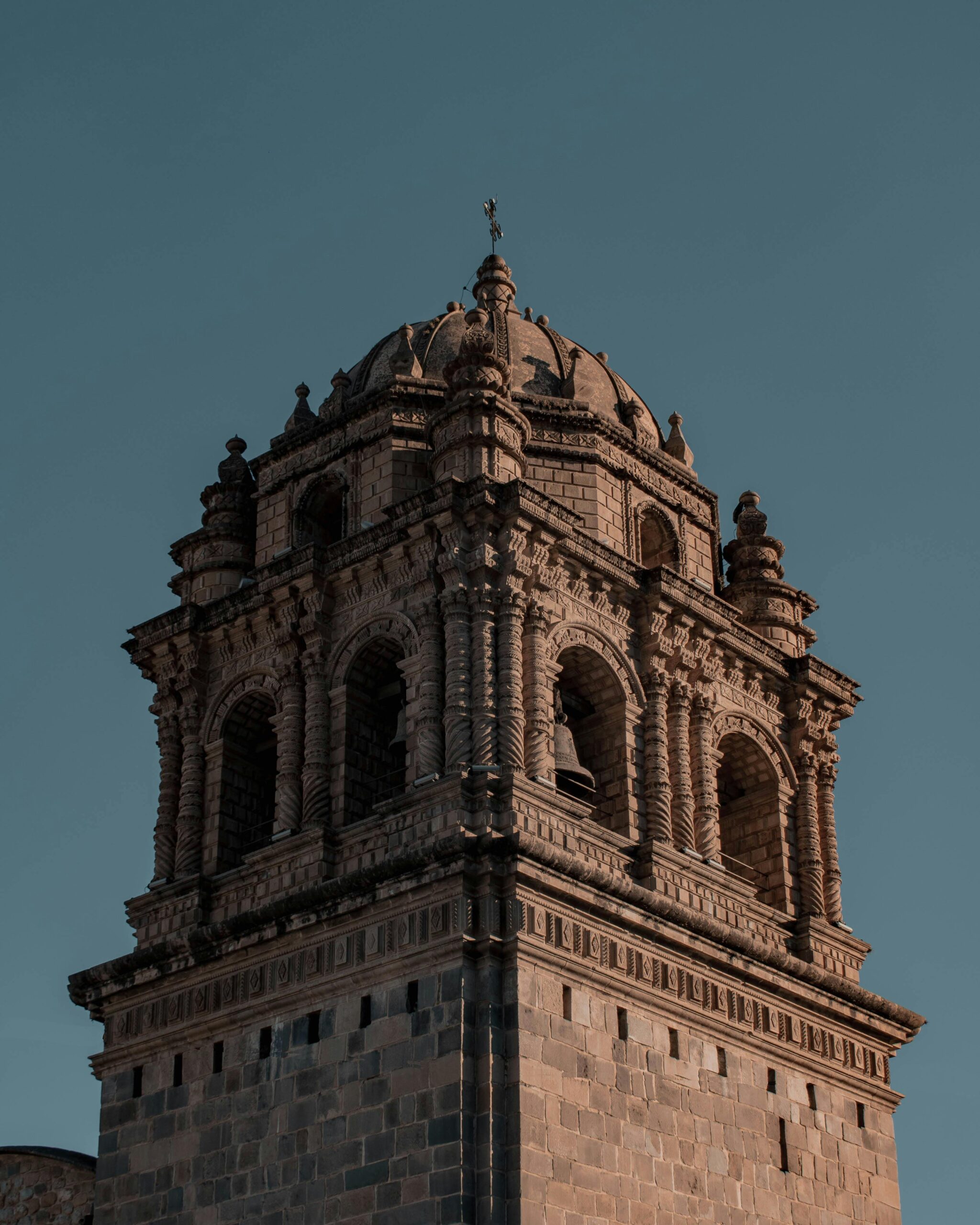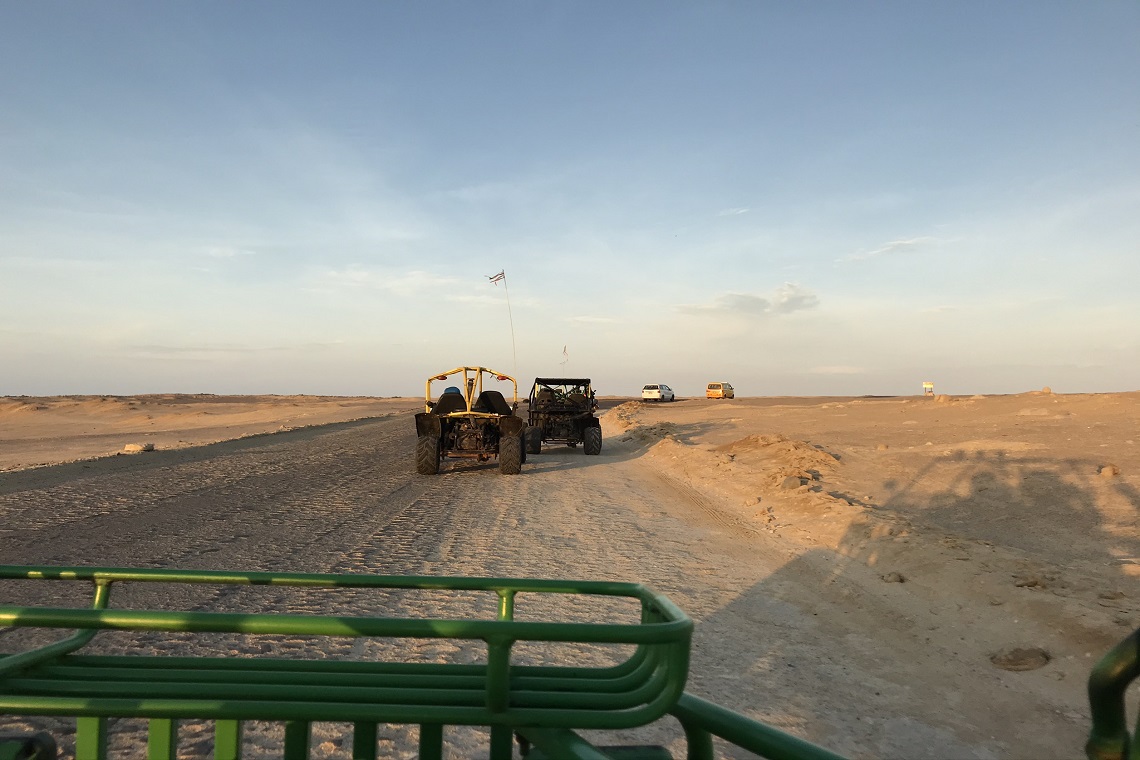The Ruta del Sol: a journey into the heart of the Andean soul
Between Cusco, the former imperial capital of the Incas, and Puno, a town located on the shores of the legendary Lake Titicaca, the highest navigable lake in the world, winds a mythical 400-kilometer route: the Ruta del Sol (the Route of the Sun).
Through the Andean highlands, small villages and sacred mountains, the Route of the Sun is more than just a journey, it is a voyage through Inca and pre-Columbian culture, and their impressive cultural histories that allow us to travel through time and better understand the local populations, including the Quechuas and Aymaras.
In this article, we will introduce you to the different historical sites to visit along the route, as well as the various possible itineraries. If you are looking to find the route that suits your needs, you’re in the right place!
At Escapate, we strive to promote a style of travel known as “slow tourism”. This type of tourism is intended to be slower, more conscious, and more human than the typical “mass tourism.” We believe that this is the best way to discover a country in a peaceful and authentic manner.
Historical and natural sites to visit:
Here, you will discover all the visitable sites along the Ruta del Sol. However, it is not possible to visit everything in one day. At Escapate, we believe these places are far too magnificent to be rushed, so at the end of this article I will detail the different itineraries offered by Escapate.
Tipón: Discovering the hydraulic genius of the Incas
About thirty kilometers from Cusco lies Tipón, one of the most fascinating archaeological sites in Peru. This site hosts impressive remnants of agricultural terraces and an ingenious irrigation system, still functional today, bearing witness to the Incas’ hydraulic expertise. Tipón is also believed to have served as an agricultural experimentation center, where the Incas tested different crops to determine which adapted best to each microclimate. Visiting this site provides valuable insight into the social, agricultural, and technological organization of the Inca Empire.
Wakra Pukara: an Inca site with breathtaking landscapes
Wakra Pukara, located about 40 km south of Cusco, is an archaeological site that captures attention thanks to its location and architecture. Perched on a hill, it overlooks the Apurímac River valley and offers breathtaking panoramic views. The name Wakra Pukara means “horned fortress”, referencing the unique layout of the stone structures that resemble two animal horns, with walls and terraces adapted to the natural topography of the region.
Contrary to what one might think, Wakra Pukara is not an Inca construction. This impressive site, perched at over 4,000 meters in altitude, is the work of the Canchis, a pre-Columbian civilization that occupied the region long before the arrival of the Incas.
When the Inca Empire began its expansion to the south, the Canchis were one of the few peoples to actively resist them. Wakra Pukara then served as a strategic refuge for the Canchi military leaders, who organized their defense there.
However, despite their determination, the Canchis eventually yielded to the Incas’ military superiority. After a long siege, the Incas managed to cut off the fortress’s water supply. Isolated and weakened, the stronghold eventually fell into the hands of the invaders. The capture of Wakra Pukara marked the end of Canchi resistance and their forced integration into the Inca Empire.
The site includes several remarkable elements, such as agricultural terraces, stone structures, and strategic points that testify to the ingenuity of the Canchis in optimizing space and defense. It is likely that Wakra Pukara served both as a military site and later as a ritual center under the Incas.
Saint Peter the Apostle of Andahuaylillas, the Sistine Chapel of Latin America:
Another site to explore is the Church of Saint Peter the Apostle in the village of Andahuaylillas. This spectacular Baroque-style building was constructed in the 17th century and is nicknamed the “Sistine Chapel of the Andes”. It impresses visitors with its wall frescoes blending Inca and European symbols, its gold-covered altars, painted ceilings, and wood carvings. This contrasts with the simplicity of the church’s exterior. Upon entering, one is immediately overwhelmed by the golden decor blending Catholicism and Andean religion.
Palcoyo: the preserved rainbow mountain
Although slightly off the classic itinerary, we couldn’t leave out Palcoyo, the other rainbow mountain. Less famous than its sister Vinicunca, Palcoyo has the advantage of being much less crowded while offering equally spectacular landscapes.
From the summit, you’ll be rewarded with a panoramic view of a mountain range shaded in red, green, orange, and violet hues due to mineral oxides in the soil. The silence here is almost mystical, broken only by the wind.
This is a must-do excursion! It’s an ideal place for nature lovers, casual hikers (1 hour of easy ascent), and adventurous spirits seeking to escape the beaten path.
It is recommended to acclimatize for a few days in Cusco to protect your body and avoid altitude sickness.
The Ananiso Canyon: an unknown natural wonder
Just a few kilometers from Palcoyo’s rainbow mountain lies a rare natural treasure: The Ananiso Canyon. Still largely unknown, this canyon impresses with its steep walls naturally sculpted by erosion, creating a dramatic and spectacular landscape, enveloped in total silence. Venturing into this mineral landscape, one traverses a narrow valley lined with unusual rock formations, small streams, and Andean vegetation.
The hike leading to the canyon offers a true immersion in wild nature, without crossing another soul. It’s a perfect place for curious travelers seeking authenticity, solitude, and an intimate connection with the mountains.
Access to the canyon is generally with a local guide to ensure safety and to uncover its well-kept secrets.
The 7 Ausangate Lagoons : between peaks and emerald reflections
Nestled at the foot of the lord of the Andes, Ausangate—the sacred mountain of the Quechuas—the 7 lagoons display their crystalline waters between 4,300 and 4,600 meters above sea level. Here, there are no Inca ruins, but a breathtaking natural landscape. You’ll have the opportunity to follow a path winding between the lagoons in a grandiose setting shaped by glaciers and Andean winds.
Along the way, you’ll encounter free-roaming alpaca herds, more elusive vicuñas, and perhaps even the majestic flight of a condor against a backdrop of snowy peaks. The high-altitude flora, discreet yet resilient, carpets the slopes with subtle colors, adding to the magic of this timeless hike.
Discovering the Singrenacocha Lagoon :
After the shimmering reflections of the 7 lagoons, another incredible gem awaits a little further: Singrenacocha Lagoon. Larger and more isolated, this lagoon stretches silently at the foot of Ausangate, surrounded by snowy peaks and sparsely vegetated valleys.
Preserved from tourism, silence reigns here, broken only by the wind or the distant cry of a condor. Much less visited than other sites, Singrenacocha offers a majestic setting for a peaceful walk, a moment of meditation, or simply endless contemplation. The contrast between the crystalline waters, shimmering glaciers, and high-altitude sky forms a dazzling, almost unreal landscape, suspended between heaven and earth.
Raqchi: an unmissable archaeological site to understand the Inca empire
A little further along the Route of the Sun lies one of the most remarkable Inca sites: the archaeological site of Raqchi. This site includes an ancient Inca citadel and is open for visits. In addition to the various ruins and monuments, it’s fascinating to observe the urban layout and understand the functioning of Inca society. One discovers numerous colcas (a type of small house filled with food to meet the population’s needs).
The centerpiece of the Raqchi archaeological site is the Temple of Huiracocha, one of the most impressive religious structures of the Inca Empire.
This monumental temple was dedicated to Huiracocha (also known as Viracocha or Wiracocha), one of the supreme deities in Andean mythology.
Considered the creator god, Huiracocha is said to have shaped the world from chaos and darkness. According to mythological accounts, he caused the sun to rise from behind a black rock, then created the moon, the stars, and all the Andean peoples. To each, he gave a language, laws, and customs, thus establishing order in the world.
The temple at Raqchi stands out for its unique architecture: a massive central wall of volcanic stone, flanked by columns and adobe foundations (a mixture of clay, straw, water, and sand), showcasing the fusion of local techniques with Inca ingenuity. Originally, it measured nearly 92 meters in length and had a double-sloped roof, which was extremely rare in Inca religious architecture.
The Raqchi viewpoint is accessible year-round and offers a breathtaking view of the surrounding mountains.
K’ananmarka : a little-known archaeological site
K’ananmarka is a little-visited but historically significant archaeological site. Located on a hill overlooking the valley, it offers remarkable panoramic views of the Andean region and preserves the remains of an ancient fortified village with numerous tombs. It is attributed to the K’ana culture, a pre-Inca civilization that inhabited the area long before the expansion of the Inca Empire.
You can observe the foundations of many circular dwellings, storage silos, and defensive stone walls. The site remains relatively unknown, making for a calm and contemplative visit.
Tinajani Canyon: a lunar landscape in the heart of the Andes
Tinajani Canyon, located not far from the town of Ayaviri, is a striking natural site distinguished by its unique rock formations, sculpted over centuries by erosion. This undiscovered canyon exudes a calm atmosphere, far removed from the crowds of the best-known tourist sites. What makes this place particularly magical are its gigantic conical rocks and geological formations that evoke lunar scenes, creating an almost unreal setting. And above all, its puyas: monumental plants up to 12 metres high, which flower only once in their lives before disappearing.
A visit to the Tinajani Canyon plunges you into a grandiose landscape, where the stones seem to have been arranged in an almost supernatural way. The hike there allows you to discover this natural wonder at your own pace, while enjoying the tranquility of the setting. It’s an ideal site for photography enthusiasts, those wishing to get away from conventional itineraries, and those wanting to observe the raw beauty of the Andes in all its splendour.
It is advisable to visit the Canyon with a local guide to better understand its geological features and the Andean legends associated with it.
Lampa and its religious jewel : the Santiago Apóstol church
Built in the 17th century, this church is one of the finest legacies of Peru’s colonial era. Located in the heart of the town of Lampa, near the central square, it features a Latin cross plan, finely sculpted Baroque facades and a roof decorated with colorful glazed tiles, typical of the Puno region. Like the Church of St. Peter the Apostle in Andahuaylillas, the interior is richly decorated, combining Baroque style with Andean influences. If you enjoy visiting religious sites, this place is definitely worth a visit!
Sillustani archaeological complex :
Sillustani is a pre-Inca archaeological site located near Lake Umayo, close to Puno. Here you can see some unusual towers known as “Chullpa”, which are actually tombs that can hold up to 10 bodies. These towers were built by the Qolla, the Aymara people conquered by the Incas in the 15th century, and can measure up to 12 metres in height. Nearby, a museum exhibits artworks from various pre-Inca and Inca cultures.
A visit to Sillustani reveals a little-known facet of Andean civilization, long before the Incas, and reveals the ingenuity of their funerary architecture in an exceptional natural setting.
Q'eswachaka: the last rope bridge in the Andes
The Q’eswachaka bridge is the last remaining Inca rope bridge hand-woven using ancestral techniques, with “Ichu”, an Andean herb widely used by Andean populations. Every year, neighbouring communities gather to rebuild it in three days, using only ichu, a hardy Andean herb. This collective ritual, part of UNESCO’s intangible cultural heritage, perpetuates centuries-old know-how and symbolizes the strength of community ties as much as that of living traditions. If you can, try to plan your visit for June, when the annual rebuilding ceremony takes place: a unique opportunity to discover the bridge in all its cultural and human dimensions.
Puno: arrival in the legendary city of Lake Titicaca and its unforgettable landscapes
After crossing all these spectacular landscapes, the journey ends in Puno, a city situated at an altitude of 3827 metres, on the shores of the mythical Lake Titicaca. Puno is much more than just an arrival point: it’s an immersion in the world of the Aymara and Quechua peoples, at the heart of ancestral traditions. Known as the folklore capital of Peru, Puno hosts numerous colorful festivities every year, combining dance, music and traditional costumes, notably at the beginning of February with the Candelaria carnival.
But above all, it’s its privileged access to Lake Titicaca, a true Peruvian emblem. The lake is home to the famous floating Uros islands, built of reeds, as well as the islands of Taquile and Amantaní, veritable cultural treasures. Puno is therefore a stage rich in human and natural discoveries, ideal for extending the Andean experience begun on the Ruta del Sol.
The Ruta del Sol is not just an itinerary between two cities: it’s a complete experience, an immersion in the glorious past of the Andes. If you choose to travel it with patience and respect, you’ll be entering a world of travel where authenticity takes precedence over haste. What if the true luxury of travel was, quite simply, taking the time to experience it?
Thank you for reading this article! If you’d like any further information, please don’t hesitate to contact us. We’ll be happy to advise you and answer any questions you may have.
At Escapate, we offer several itineraries to discover the Ruta del Sol, which we tailor to your individual requirements. Here’s one of them:
Day 1: Cusco-Palcoyo-Raqchi
Day 2: Raqchi-K’ananmarka-Puno




